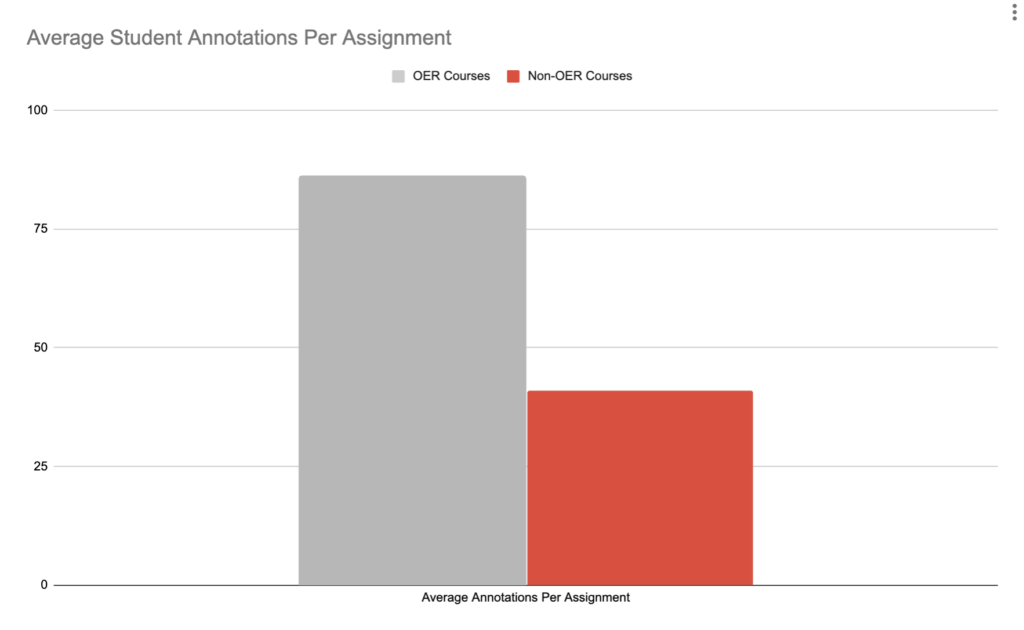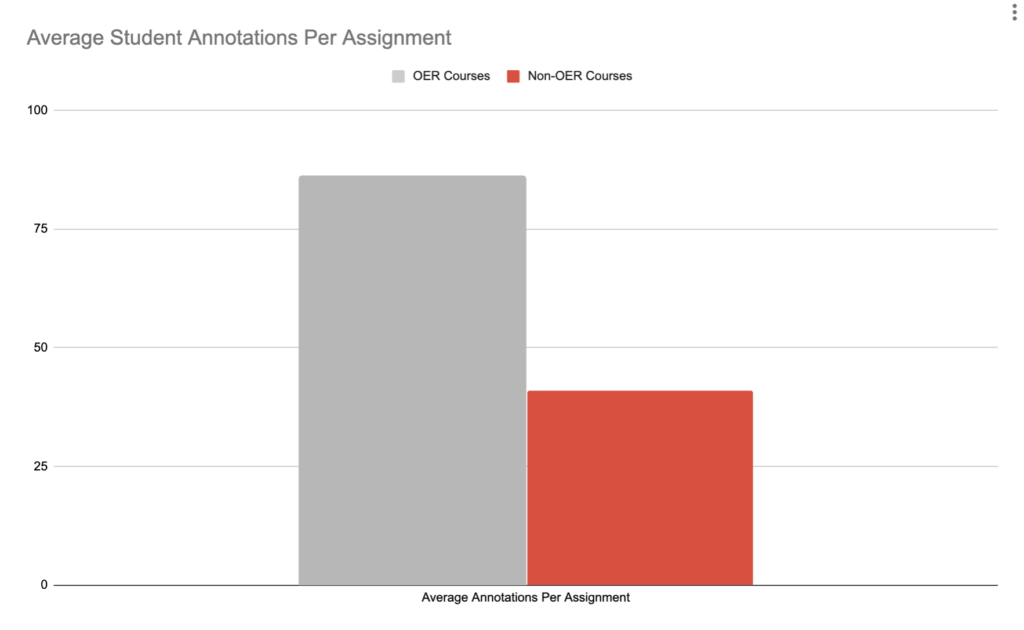
Sarah Riforgiate
Interim Director of the Center for Excellence in Teaching and Learning, UWM

Amy Mangrich
Teaching, Learning and Technology Consultant, CETL | Associate Director, UWM Online, UWM
Introduction
The University of Wisconsin – Milwaukee (UWM) has been at the forefront of the Open Educational Resources (OER) movement, striving to make quality education more accessible and affordable for students. As part of their commitment to enhancing the learning experience, UWM partnered with Hypothesis to increase engagement and leverage the power of OER materials. This case study explores the transformative impact of integrating Hypothesis into OER courses at UWM.
Empowering OER with Hypothesis
UWM embarked on a mission to bolster the utilization of open educational resources, recognizing their potential to reduce costs for students and improve access to quality education. An integral part of this mission was integrating Hypothesis, a tool designed to facilitate social annotation, into OER courses. Hypothesis complemented UWM’s OER materials seamlessly, offering a platform for students to engage more deeply with course materials.
Unlocking Enhanced Engagement and Collaboration
During the pilot phase of the Hypothesis implementation, UWM instructors witnessed significant benefits in courses utilizing Hypothesis with OER. Students embraced Hypothesis as a tool to annotate and discuss OER course materials collaboratively. This dynamic approach to learning elevated comprehension and heightened student engagement across the OER courses.
Notably, students reported that Hypothesis allowed them to learn collaboratively, even in online environments. They shared thoughts, asked questions, and responded to their peers’ insights within the text itself. As Sarah Riforgiate, UWM’s Interim Director of the Center for Excellence in Teaching and Learning, points out, “Hypothesis provides an avenue for students to engage with texts and each other in ways that other software does not allow them to do. By creating the space for that engagement, it deepens their learning.”
Students who utilized Hypothesis agreed. One graduate student highlighted its significant role in enhancing their understanding of OER materials. They shared, “Hypothesis really helped me understand complex phrasing in most of the articles I read, because not only could I annotate, but I could collaborate with other students.”
Building Connections Through Hypothesis
The integration of Hypothesis with OER at UWM had an unexpected yet powerful side effect: building connections among students and increasing collaboration in the classroom. Interactions via Hypothesis allowed students to virtually discuss and engage with classmates. Through social annotation, students formed a sense of community, forging bonds and friendships.
These connections proved invaluable for students throughout their OER courses. Students were able to discover new thoughts and ideas by learning from their peers through annotations. One graduate student noted, “Seeing annotations from others sometimes challenged or confirmed my own thoughts about a topic/idea. The collective repository provided a rich text from which to draw new ideas and conclusions on our own and during class meetings.”
Quantifying Success:
Hypothesis’ Impact on OER and Engagement
UWM’s success story with Hypothesis and OER extends beyond qualitative outcomes. Over a single semester, the numbers paint a compelling picture:
27,000 annotations
Across 49 courses utilizing Hypothesis, over 27,000 annotations were made.
65% of courses used OER
Of those 49 courses, 32 were OER courses, embracing the power of open educational resources.
25.9 annotations per student
These courses engaged a total of 1067 students, who averaged 25.9 annotations per student during the semester.
29,170 times Hypothesis was launched
Perhaps the most striking statistic is that students launched Hypothesis a staggering 29,170 times. This indicates an extraordinary level of engagement, as students revisited course materials to explore their peers’ annotations.
Further, when we compared OER courses to non-OER courses, the courses that used OER materials saw increased course engagement.
OER Courses Compared to Non-OER Courses
- Students were more likely to contribute annotations and spend more time and effort engaging with OER materials. Students averaged 31 annotations in OER courses compared to 16 annotations per student in non-OER courses.
- Both course types enjoyed using Hypothesis and seeing peer annotations, but OER students were slightly more likely to use the app with 28 average launches of Hypothesis in OER courses versus 25 average launches in non-OER courses.
- While there were fewer assignments in OER courses on average, students were more engaged with those OER assignments when using Hypothesis compared to non-OER courses. Students averaged 86 annotations on each assignment in OER courses compared to 41 average annotations on each assignment in non-OER courses.
 |
 |
These results demonstrate that Hypothesis increased engagement within courses and significantly enhanced student interactions with OER materials. The high frequency of students revisiting course materials when using Hypothesis exemplifies their desire for collaborative learning that leads to increased engagement. Hypothesis brings students back to the reading and course materials more effectively than any other method does.
Conclusion
The partnership between the UWM and Hypothesis has resulted in transformative educational experiences. Hypothesis amplifies student engagement within OER courses while enhancing the overall learning process. Together UWM and Hypothesis empower students to access quality educational materials, actively participate in learning, and build meaningful connections with their peers. UWM’s commitment to affordable and inclusive education is exemplified by its journey with Hypothesis, providing a blueprint for institutions seeking to enhance the OER landscape.
The adoption of Hypothesis continues to grow at UWM with Amy Mangrich, Teaching, Technology, and Learning Consultant at the Center for Excellence in Teaching and Learning and the Associate Director for UWM Online, noting “A lot of the growth happens from instructors just talking to each other about it. It’s one of the few tools where the growth is happening spontaneously. It’s an amazing tool for both instructors and students.”
Ready to give students a whole new way to engage with scholarly content? Fill out the form below to get started:
